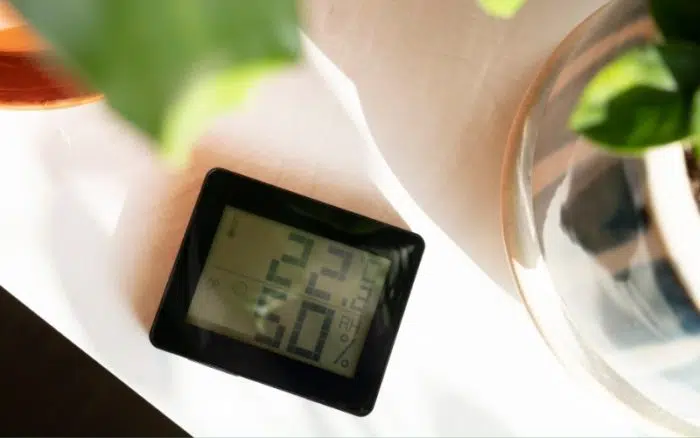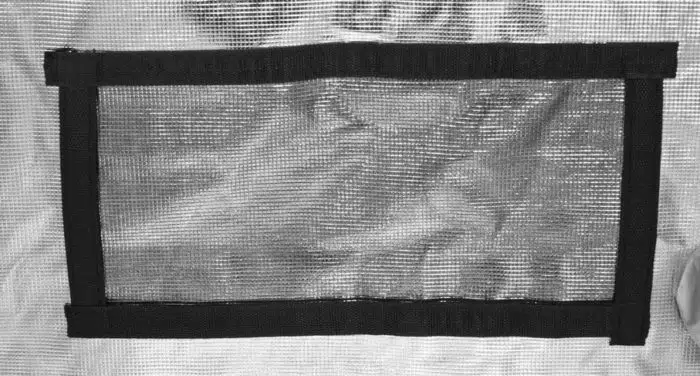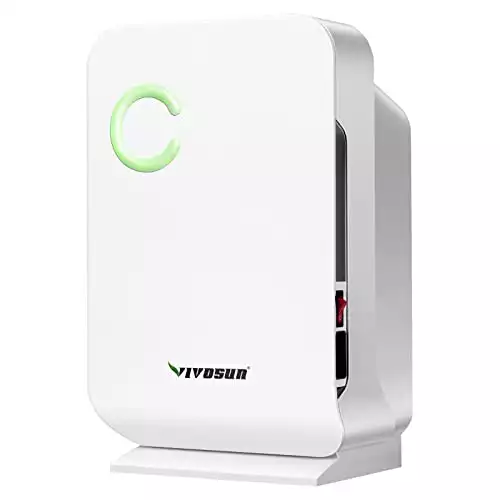Being able to control humidity is important for plants, especially during the vegetative stage of growth. However, high humidity levels can be detrimental to your plants, leading to fungal problems and stunted growth.
If you’re noticing that your plants are looking a bit under the weather, it may be time to take action to lower the humidity in your grow tent.
Reducing the humidity will help to remove excess moisture from the air, creating a more ideal growing environment for your plants. By taking these steps, you can help ensure that your plants stay healthy and thrive.
How to Lower Humidity in Grow Tent
There are a number of ways you can lower the humidity in your grow tent or grow room. Each has its pros and cons, some working faster than others, but that speed often comes with a price.
You can lower humidity in a grow tent with a dehumidifier or air conditioner, but also by removing stagnant water and decreasing plant density. There are other ways to decrease humidity as well, listed out for you below.
1. Use an Air Conditioner
A grow tent air conditioner is another method for removing humidity from the tent. The cold air will help reduce humidity and can also be a great way to reduce air temperature as well during the hot summer months, or if you live in a very warm climate.
By keeping the humidity levels low, the air conditioner helps to create a drier environment that is less conducive to fungal growth.
2. Check on Your Plant Density
If you’re looking at lowering humidity in the grow tent, you might easily be able to do this by double checking your plant density. If you have too many plants in the pot (i.e. grow tent) they could be putting off too much humidity.
Up to 97% of the water plants take in can be later expelled through respiration and photosynthesis. That’s a lot of water for each plant to be putting off into the air.
If you have too many plants in a grow tent, this can drastically increase the water vapor in the space as they will be too crowded. While they might be getting enough light and have enough space to grow, plant density is something to keep in mind if you keep running into high humidity issues.
3. Get Rid of Stagnant Water
When you’re trying to raise the humidity in a grow tent, oftentimes people will put out bowls or trays of water that can then evaporate into moisture for plants.
But if your humidity is becoming too high, you will want to remove these bays of stagnant water. This goes for hanging towels and wet sponges that you might have put in the tent.
4. Improve Ventilation (Add Fans, Turn Existing Fans Up)
Proper ventilation is key for plant growth and removing the possibility of issues that can arise from not getting enough air circulation in the environment.
If you have existing fans in your grow tent setup (which you should), you might be able to turn that fan onto a higher setting and increase air flow. This can help move some of the humid air out of the grow room and keep fresh air circulation around the tent.
If you already have your fans turned up to 11, you can also try running an additional fan inside the tent to help circulate the air and get rid of excess humidity.
If the humidity level is still too high, you may need to invest in a dehumidifier.

5. Use a Dehumidifier
Grow tent dehumidifiers are another great way to quickly reduce humidity in a grow tent.
A dehumidifier is great because it works quickly, and can remove a lot of moisture from the grow tent.
The caveat is that you don’t want to remove too much humidity from the air, as most plants love high humidity for proper growth. But how do you avoid a growing environment with too low humidity?
The good thing about dehumidifiers is that they have automated settings that make sure you’re not removing too much. This one has those capabilities and is great for many grow tents.
- Works in spaces up to 250 square feet
- 1.3 Liter tank capacity
- Auto shut off capability
6. Avoid Overwatering Plants
Humidity levels rise when there is more moisture in the air. When there is excess water and too much coming off of the plants, your humidity level will rise.
When you overwater your plants, you are adding more humidity to the system, while also giving some fungal diseases a place to grow and provide pests with an ideal environment to grow.
You can try bottom watering your plants as an option, or providing a better drainage system for your plants.
7. Turn Off Your Grow Lights
Grow lights are important for giving your plants enough artificial sunlight to grow, but they can also put off quite a bit of heat.
When the heat in a tent rises, this can also raise the average humidity of the tent. If you already have excessive humidity in your tent, this is not a good thing.
While I’m not recommending you turn off your grow lights altogether, if you are running them too long and don’t need them on all day, you might want to consider changing up your lighting schedule.
Alternatively, if you’re always running into a high relative humidity in your tent, you may want to look for grow lights that put off less heat.
8. Create More Air Holes
While I’m not advocating for poking holes in your tent, there are generally a number of ventilation options that come with most grow tents.

There are ventilation windows, and ducting ports you might not be using that you can open up. By creating air holes, your tent is able to remove more carbon dioxide and humidity, while bringing in fresh air for your plants to breathe.
9. Hang a Moisture Absorber
I’m sure you’ve seen the commercials for those moisture absorbers you can hang in a closet, or other places in your house that get too humid.
Why not use these in the grow tent?
While it’s not a permanent solution, these can definitely help remove some water vapor from the air in your grow tent or grow room. There are also 4 pound buckets of this stuff you can use if you are growing in a larger space.
10. Use a More Absorbent Soil
There are a number of moisture absorbent soils you can use with your plants that can help lower humidity. Clayey soil and loamy soil are two of them.
Loamy soil is often touted as the best kind of soil for growing outdoor plants, so it’s no surprise that it can be good for indoor plants as well.
What is the Best Humidity Level and Temperature for a Grow Tent?
The “best” humidity level are ideal temperatures are going to depend on what you’re growing, as well as the size of your grow tent. In addition, the ideal temperature and level of humidity depends on the stage of the plants you’re growing.
| Stage | Temperature (F) | Temperature (C) | Relative Humidity |
| Seedlings & Clones | 75-78 | 23-25 | 70-75% |
| Veg | 70-83 | 21-28 | 55-70% |
| Flowering | 65-80 | 18-26 | 40-55% |
| Harvesting | 65-75 | 18-24 | 35-40% |
| Drying | 65-75 | 18-24 | 45-55% |
Signs Your Grow Tent Humidity is Too High
If you’re unsure if the humidity in your grow tent is too high, there are a number of things to do.
First, get yourself a hygrometer. You can grab them for as low as $10 and they will keep you in the loop on the current temperature and humidity of your grow tent at all times.
You can spend a little more and get one that syncs to your phone (I love this one) and will send you notifications if things are going wrong, but you can get a cheap one to start with too.
Alright, now that that’s out of the way, there are some symptoms your plant might be showing that let you know humidity is off the charts.
- Leaves are excessively damp
- Leaves are forming close together
- Flower or bud rot
- Slow plant growth
- Mildew and mold forming
- Fungal growth
While it is more rare than low humidity, higher humidity is definitely an issue you might encounter when growing indoors. Adding a dehumidifier, opening up some of the ventilation system vents, and removing excess water from the tent are all good ways to reduce your humidity.
A balanced humidity level is ideal for proper yields and plant growth. By controlling the humidity in your tent better, you’re giving your plants the best chance at success.



